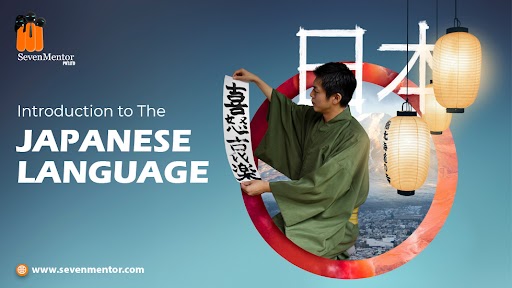Introduction to Japanese Language
Language is a remarkable tool that enables us to connect, express our thoughts, and understand the world around us. Japanese, with its unique characters and cultural nuances, stands as a captivating example of linguistic beauty. In this blog, we will delve into the elegance and simplicity that define the Introduction to Japanese language, as well as explore some of its fascinating aspects. Enroll now and unlock the beauty of the Japanese language Course in Pune.
- Elegance in Simplicity
Japanese is often praised for its simplicity and elegance. Unlike some languages that use complex grammatical structures, Japanese maintains a relatively straightforward syntax. Sentences are typically subject-object-verb (SOV) in structure, with the verb placed at the end. This simplicity not only makes the language approachable but also adds a certain poetic flow to conversations and written text.
For Free, Demo classes Call: 02071171747
Registration Link: Click Here!
- Three Writing Scripts
One of the most distinct features of the Japanese language is its writing system, which includes three scripts: Kanji, Hiragana, and Katakana. Kanji are logographic characters borrowed from Chinese, each representing a concept or word. Hiragana is a syllabary used for native Japanese words and grammatical elements. Katakana, also a syllabary, is mainly used for loanwords and foreign names. This combination of scripts allows for a rich layering of meaning and an aesthetic appeal in both written and printed materials.
- Politeness and Honorifics
Japanese culture places a strong emphasis on respect and politeness, and this is intricately woven into the language. Honorifics, such as “-san” or “-sama,” are attached to names to denote varying degrees of respect. The language also has different levels of formality, influencing the choice of words and expressions in different social contexts. This attention to politeness adds depth and sophistication to interactions.
For Free, Demo classes Call: 02071171747
Registration Link: Click Here!
- Minimalistic Pronunciation
The Japanese language has a relatively small set of phonetic sounds, making it accessible for learners. There are only five vowel sounds, and consonant sounds are typically single, unlike some languages with intricate blends. This minimalistic pronunciation contributes to the clarity and simplicity of spoken Japanese.
- Untranslatable Concepts
Japanese is rich with words that capture nuanced emotions and experiences that may not have direct equivalents in other languages. For example, “Tsundoku” refers to the act of acquiring books and letting them pile up, intending to read them later. “Mono no aware” expresses the bittersweet awareness of the impermanence of things. These terms offer unique insights into the Japanese worldview and provide a glimpse into the cultural sensitivities that shape the language.
For Free, Demo classes Call: 02071171747
Registration Link: Japanese language Classes in Pune
- Nature and Seasons
The Japanese language is deeply connected to the country’s natural beauty and changing seasons. This is evident in the concept of “kigo,” which are seasonal words or phrases that capture the essence of a particular time of year. These words are often used in traditional poetry forms like haiku and tanka, where the brevity of the language highlights the beauty of nature and the fleeting moments of life.
- Idioms and Proverbs
Idioms and proverbs offer a fascinating glimpse into a language’s cultural values and beliefs. In Japanese, expressions like “Nana korobi, ya oki” (Fall seven times, stand up eight) embody the resilience and determination admired in Japanese society. Exploring these linguistic gems allows us to connect with the wisdom and experiences of the Japanese people.
Do watch our latest video: Click Here
Conclusion
The Japanese language’s simplicity, elegance, and unique cultural nuances make it a truly captivating linguistic journey. Its minimalistic pronunciation, intricate writing system, and untranslatable concepts contribute to its distinctiveness and beauty. As we explore its nuances, we not only gain insights into the Japanese culture but also appreciate the art of language itself, reminding us of the profound impact words can have on our understanding of the world.
Author:-
Apeksha Sharma
© Copyright 2023 | SevenMentor Pvt Ltd.
Call the Trainer and Book your free demo class
For the Japanese Language
Call now!!!

